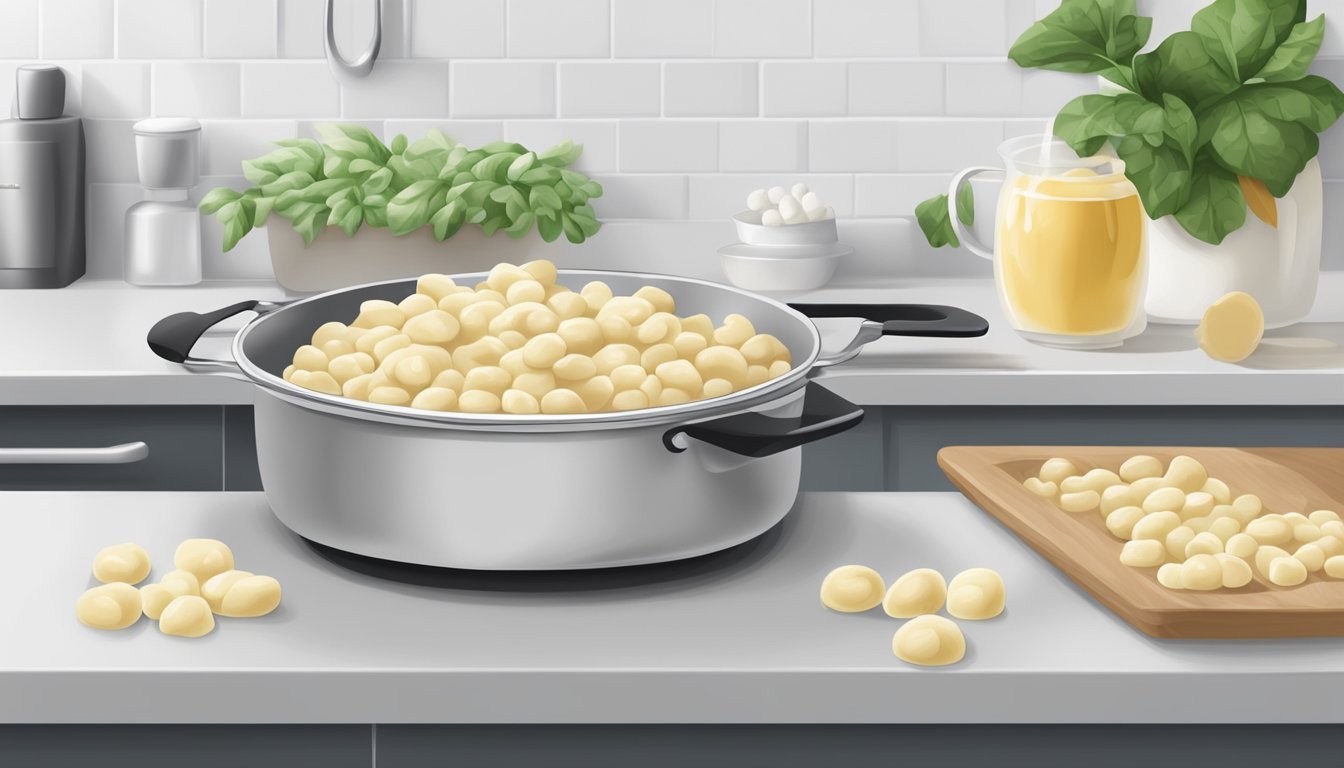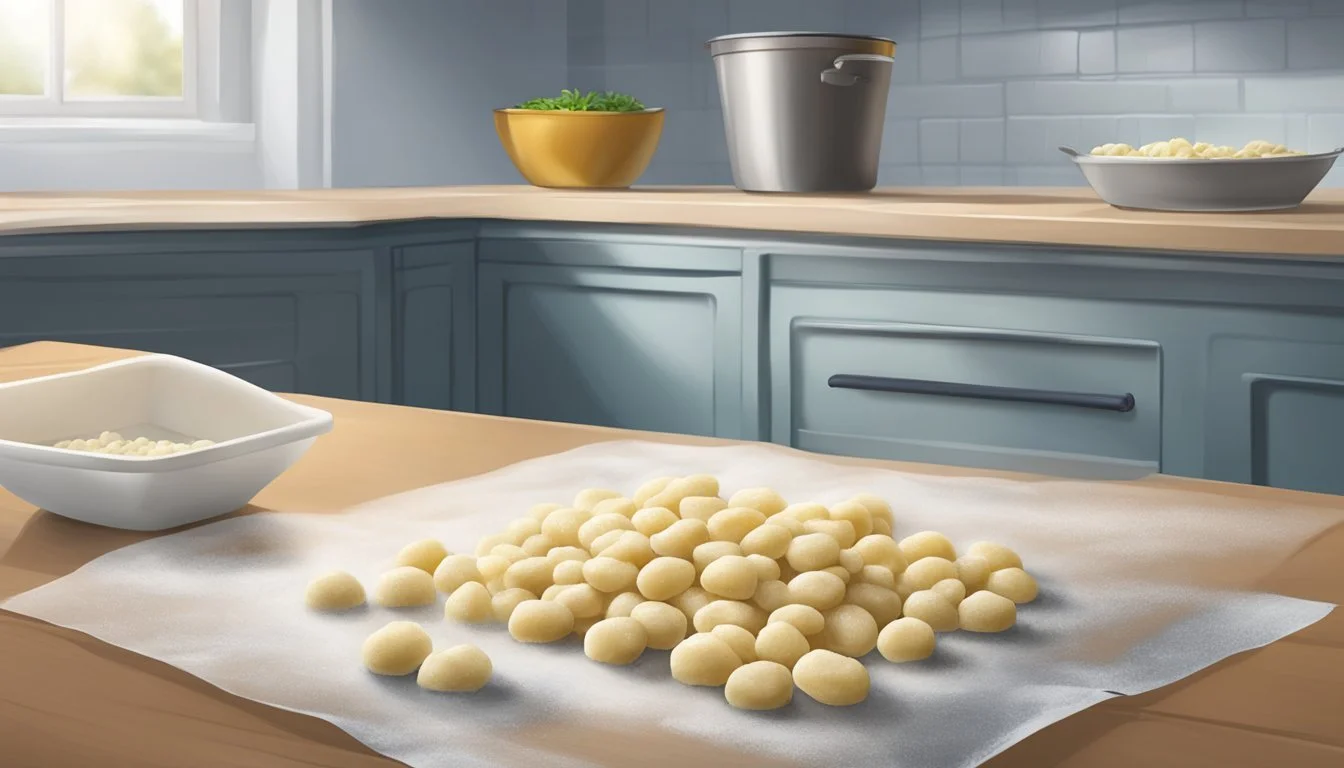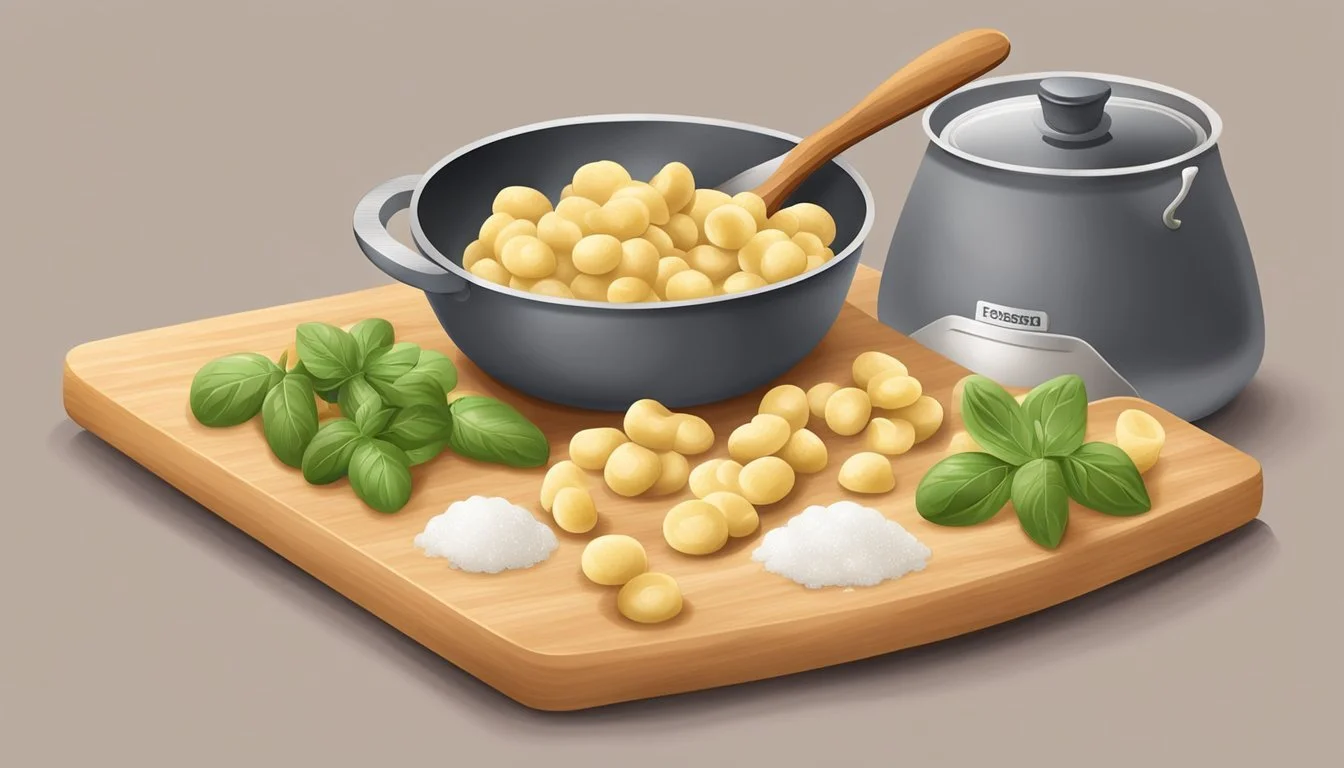Fresh vs Frozen Gnocchi: Comparing Taste, Texture, and Cooking Convenience
Gnocchi, those delightful Italian dumplings, have become a staple in many kitchens. The choice between fresh and frozen gnocchi often puzzles home cooks and pasta enthusiasts alike. Fresh gnocchi offer a tender, pillowy texture and rich potato flavor, while frozen varieties provide convenience and longer shelf life.
Preparing fresh gnocchi requires time and effort, involving potato mashing, dough kneading, and shaping. The result is a light, fluffy pasta that cooks quickly and pairs well with various sauces. Frozen gnocchi, on the other hand, can be stored for months and cooked directly from the freezer, making them a time-saving option for busy weeknights.
Both types have their merits in taste and texture. Fresh gnocchi tend to have a more delicate consistency, while frozen versions can sometimes be denser. The cooking methods differ slightly, with fresh gnocchi typically requiring less time in boiling water. Ultimately, the choice between fresh and frozen gnocchi depends on individual preferences, time constraints, and culinary goals.
Understanding Gnocchi
Gnocchi are small, pillowy pasta dumplings with a rich history and diverse variations. These bite-sized delights are crafted from simple ingredients and can be prepared in numerous ways to suit different tastes and preferences.
History and Origins
Gnocchi's roots trace back to ancient Rome, where similar dumplings were made from semolina flour. The modern potato-based version emerged in the 16th century after potatoes were introduced to Europe from the Americas.
Italian regions developed unique gnocchi recipes. Northern Italy favored potato gnocchi, while southern regions often used ricotta cheese. The name "gnocchi" likely derives from the Italian word "nocchio," meaning knot in wood, or "nocca," referring to knuckles.
Gnocchi became a staple in Italian cuisine, traditionally eaten on Thursdays. This custom, known as "Giovedì Gnocchi," originated in Rome and spread throughout Italy.
Ingredients Breakdown
The basic gnocchi recipe consists of:
Potatoes: Starchy varieties like Russet are preferred
Flour: All-purpose or "00" flour for structure
Egg: Binds ingredients (optional in some recipes)
Salt: Enhances flavor
Ratios vary, but a common formula is:
Ingredient Quantity Potatoes 1 pound Flour 1 cup Egg 1 Salt 1/4 tsp
Some recipes substitute potatoes with ricotta cheese or semolina flour. These alternatives create gnocchi with different textures and flavors.
Types of Gnocchi
Potato Gnocchi: The most common variety, made with mashed potatoes, flour, and sometimes egg.
Ricotta Gnocchi: Lighter and more delicate, using ricotta cheese instead of potatoes.
Semolina Gnocchi: Made from semolina flour, often baked rather than boiled.
Spinach Gnocchi: Incorporates spinach for added flavor and color.
Pumpkin Gnocchi: A seasonal favorite using pumpkin puree.
Gnocchi shapes vary, with the most recognizable being small ovals with ridges. These ridges are traditionally made by rolling gnocchi over a fork or special board, helping sauce adhere better.
Regional variations exist, such as Gnocchi alla Romana from Rome, which are larger and disc-shaped.
Preparation and Cooking Techniques
Gnocchi preparation involves creating dough, shaping, and cooking through various methods. Each step contributes to the final texture and flavor of these Italian dumplings.
Creating the Dough
Gnocchi dough typically combines mashed potatoes, flour, and egg. The key is using starchy potatoes like Russets, boiled and mashed while still warm. Add flour gradually, kneading gently until a soft dough forms.
Too much flour can make gnocchi tough, so use just enough to prevent stickiness. Some recipes omit egg for a lighter texture. Let the dough rest briefly before shaping.
For variations, incorporate herbs, cheese, or vegetable purees into the dough. Sweet potato or pumpkin can replace regular potatoes for unique flavors.
Shaping and Ridges
Divide the dough into smaller portions. Roll each into a rope about 1/2 inch thick. Cut the rope into 1-inch pieces to form individual gnocchi.
To create ridges, press each piece gently against the tines of a fork or a gnocchi board. This texture helps sauce cling better to the dumplings.
For smoother gnocchi, simply leave them as pillowy shapes without ridges. Some regions in Italy prefer this style.
After shaping, dust gnocchi lightly with flour to prevent sticking. If not cooking immediately, arrange in a single layer on a floured tray.
Boiling Gnocchi
Bring a large pot of salted water to a boil. Add gnocchi in small batches to avoid overcrowding. Fresh gnocchi cook quickly, usually in 2-3 minutes.
They're done when they float to the surface. Remove with a slotted spoon and transfer to a bowl. Toss gently with olive oil to prevent sticking.
For frozen gnocchi, do not thaw before cooking. Add them directly to boiling water and cook until they float, usually 3-4 minutes.
Reserve some cooking water to add to sauces if needed. This starchy water helps sauces cling to the gnocchi.
Pan-Frying to Perfection
Pan-frying adds a delightful crispy exterior to gnocchi. Heat olive oil or butter in a skillet over medium heat. Add boiled gnocchi in a single layer.
Cook for 2-3 minutes on each side until golden brown. Avoid overcrowding the pan to ensure even browning.
For extra flavor, add garlic, herbs, or grated cheese during frying. Finish with a squeeze of lemon juice for brightness.
Frozen gnocchi can be pan-fried directly from frozen. They may release more moisture, so allow extra time for crispiness to develop.
Fresh Versus Frozen Gnocchi
Fresh and frozen gnocchi offer distinct qualities in texture, taste, storage, and preparation. Each type has advantages for different culinary needs and situations.
Comparing Texture and Taste
Fresh gnocchi boasts a soft, pillowy texture that's difficult to replicate. Its delicate nature allows it to absorb sauces beautifully, enhancing flavors in dishes like gnocchi with butter and sage. The taste is often described as more authentic and potato-forward.
Frozen gnocchi tends to have a firmer texture. While it may not achieve the same level of tenderness as fresh, quality frozen options can still deliver satisfying results. The taste can be comparable, especially when paired with robust sauces or in heartier dishes.
Some frozen varieties, like sweet potato or cauliflower gnocchi, offer unique flavors and textures not typically found in fresh versions.
Shelf Life and Storage
Fresh gnocchi has a limited shelf life, typically lasting only a few days when refrigerated. It's best stored in an airtight container to maintain freshness. For longer storage, fresh gnocchi can be frozen, but this may affect its texture.
Frozen gnocchi offers significant advantages in terms of longevity. It can be stored in the freezer for several months without compromising quality. This makes it an excellent option for meal planning or for those who don't frequently use gnocchi.
Convenience and Usability
Fresh gnocchi shines in dishes where texture is paramount. It cooks quickly, often requiring just a few minutes in boiling water. However, its short shelf life means it must be used promptly after purchase or making.
Frozen gnocchi excels in convenience. It's readily available for impromptu meals and doesn't require thawing before cooking. Many chefs recommend alternative cooking methods for frozen gnocchi:
Roasting: Spread on a baking sheet and roast for a crispy exterior
Pan-frying: Sauté for a golden brown finish
Baking: Incorporate directly into baked dishes
These methods can enhance texture and flavor, often surpassing the results of boiling frozen gnocchi.
Freezing and Storing Homemade Gnocchi
Freezing gnocchi is an excellent way to preserve this delicate pasta for future meals. Proper freezing techniques ensure the gnocchi maintains its texture and flavor when reheated.
How to Freeze Gnocchi
To freeze gnocchi, first arrange uncooked pieces in a single layer on a baking sheet lined with parchment paper. Place the sheet in the freezer for 2-3 hours until the gnocchi are completely frozen. This initial freezing prevents the pieces from sticking together.
Once solid, transfer the frozen gnocchi to airtight containers or resealable freezer bags. Remove as much air as possible to prevent freezer burn. Label the containers with the date and contents.
Frozen uncooked gnocchi can last up to 2 months in the freezer. For best quality, use within 6-8 weeks.
Tips to Prevent Sticking
Dusting gnocchi with flour before freezing helps prevent sticking. Use a light coating of all-purpose flour or semolina. Shake off any excess to avoid a gummy texture when cooked.
Avoid overcrowding the baking sheet when freezing. Leave space between each piece to allow air circulation. This ensures even freezing and prevents clumping.
If storing in bags, place a sheet of parchment paper between layers of gnocchi. This extra step makes it easier to remove individual portions later.
Reheating for Best Quality
To cook frozen gnocchi, do not thaw first. Add the frozen pieces directly to boiling water. Cook for 2-3 minutes or until they float to the surface. Drain and serve immediately with sauce.
For pan-frying, heat oil in a skillet over medium-high heat. Add frozen gnocchi and cook for 5-7 minutes, stirring occasionally, until golden and crispy.
Avoid microwaving frozen gnocchi, as this can result in a gummy texture. Boiling or pan-frying produces the best results for texture and flavor.
Serving and Pairing
Gnocchi's versatility shines through its serving options and flavor pairings. The right sauce, dish positioning, and creative toppings can elevate this Italian favorite to new culinary heights.
Choosing the Right Sauce
Gnocchi pairs beautifully with a variety of sauces. Traditional options include tomato sauce, pesto, and butter-based sauces. A simple brown butter and sage sauce complements gnocchi's delicate texture. For a richer experience, try a creamy cheese sauce or Alfredo.
Pesto, whether classic basil or sun-dried tomato, adds vibrant flavor. Tomato-based sauces, from marinara to vodka sauce, offer a tangy contrast to gnocchi's softness.
For a lighter touch, toss gnocchi in olive oil with fresh herbs and a sprinkle of Parmesan cheese. This allows the gnocchi's flavor to shine through.
Gnocchi as a Main or Side
Gnocchi's versatility allows it to star as a main course or support as a side dish. As a main, serve a generous portion with a hearty sauce and protein like grilled chicken or sautéed shrimp.
For a side dish, pair a smaller serving with grilled meats or roasted vegetables. Gnocchi complements steak, pork chops, or grilled fish beautifully.
In Italian cuisine, gnocchi often appears as a first course, or "primo piatto," before the main entrée. This tradition showcases gnocchi's ability to set the stage for a multi-course meal.
Innovative Toppings and Creativity
Explore creative toppings to add texture and flavor to gnocchi dishes. Crispy pancetta or prosciutto bits provide a salty crunch. Toasted pine nuts or walnuts offer nutty depth.
Roasted vegetables like cherry tomatoes, zucchini, or bell peppers introduce fresh flavors and colors. For a gourmet twist, try truffle oil or shaved truffles.
Experiment with cheese varieties beyond Parmesan. Crumbled gorgonzola, goat cheese, or burrata add unique flavors and creamy textures.
Fresh herbs like basil, thyme, or chives brighten the dish. For a modern take, try crispy fried sage leaves as a garnish.
Nutritional Information
Gnocchi provides a substantial source of carbohydrates and energy. Its nutritional profile varies slightly between fresh and frozen varieties, with some differences in calorie content and vitamin retention.
Caloric and Dietary Breakdown
A typical serving of gnocchi (100g) contains approximately 150-200 calories. Carbohydrates make up the majority of its macronutrient content, usually around 30-40 grams per serving. Gnocchi offers minimal protein, generally 3-5 grams per serving.
Fat content is low, typically 1-3 grams per serving. Sodium levels can vary, with some brands containing 300-500mg per serving. Fresh gnocchi may have slightly lower calorie and sodium content compared to frozen versions.
Gnocchi provides small amounts of vitamins and minerals, including B vitamins and potassium. Frozen gnocchi might have slightly lower vitamin content due to processing and storage.
Balancing Your Meal
To create a nutritionally balanced meal with gnocchi, pair it with protein-rich foods and vegetables. Add lean meats, fish, or legumes to increase protein intake. Include a variety of colorful vegetables to boost fiber, vitamins, and minerals.
Consider portion sizes when serving gnocchi. A recommended serving is about 1 cup (140-170g). Opt for tomato-based or light olive oil sauces instead of heavy cream sauces to keep the meal's calorie content in check.
For added nutrients, try whole wheat or vegetable-based gnocchi varieties. These options often provide more fiber and a broader range of vitamins and minerals than traditional potato gnocchi.
Tools and Equipment
Preparing gnocchi requires specific kitchenware and tools. The right equipment ensures consistent results whether working with fresh or frozen gnocchi.
Essential Kitchenware
A large pot is crucial for boiling gnocchi. Choose one with ample capacity to accommodate the gnocchi without overcrowding. A slotted spoon helps remove cooked gnocchi from water efficiently.
For pan-frying, a skillet or non-stick pan works well. Cast iron skillets provide even heat distribution, ideal for achieving a crispy exterior.
A colander assists in draining boiled gnocchi quickly. Mixing bowls are necessary for combining ingredients when making fresh gnocchi.
Measuring cups and spoons ensure accurate proportions. A kitchen scale offers precision when weighing potato or flour for homemade gnocchi recipes.
Specialized Gnocchi Tools
A gnocchi board, also known as a ridger, creates grooves on gnocchi surfaces. These ridges help sauce adhere better to the pasta. Alternatively, a fork can create similar textures.
A potato ricer produces smooth, lump-free potato for homemade gnocchi. It ensures a light, fluffy texture in the final product.
Gnocchi paddles, similar to gnocchi boards, offer a larger surface area for shaping multiple pieces at once.
For cutting gnocchi, a bench scraper or sharp knife works effectively. These tools help create uniform pieces, ensuring even cooking.
A gnocchi roller simplifies the shaping process, especially when making large batches. It forms and textures gnocchi in one motion.






